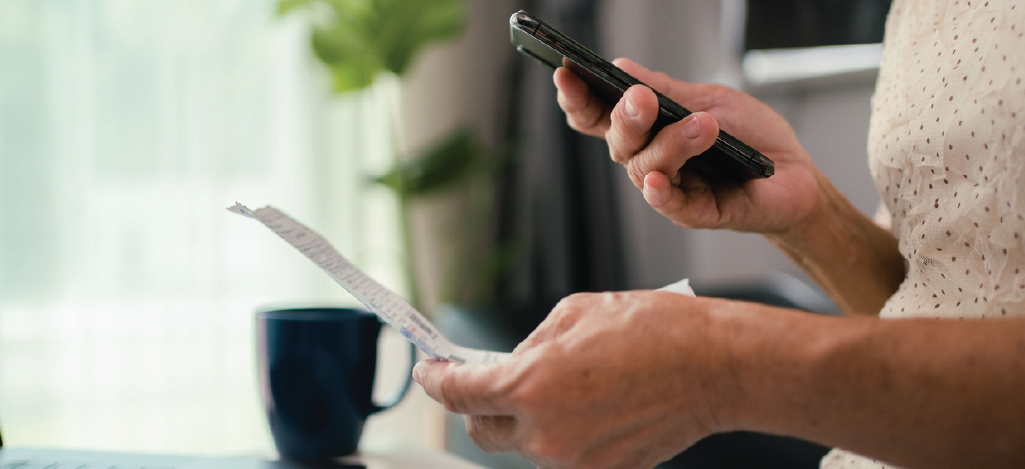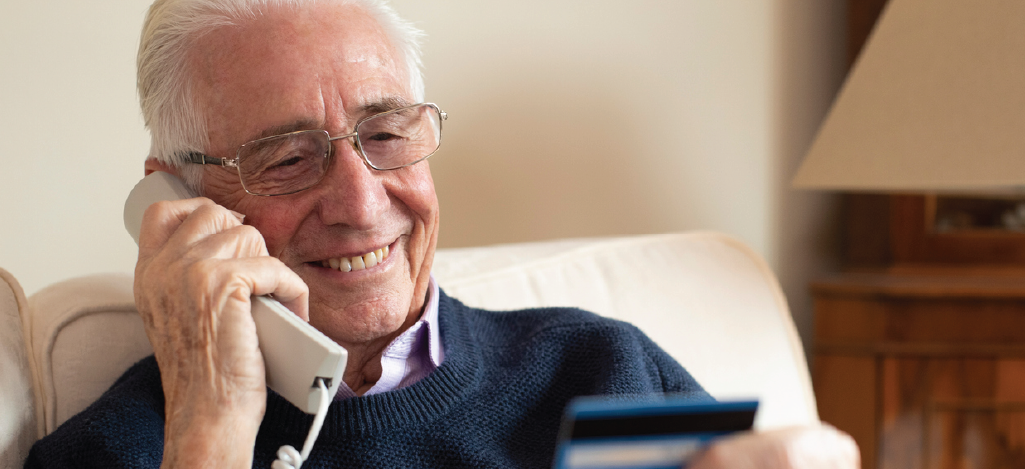Many healthcare providers struggle to answer the question of how often they should send billing reminders to their patients. Read on as we provide some answers!
Sending timely billing reminders and collecting payments efficiently is key to every healthcare practice's financial health, regardless of size. Like the rise of electronic statements and online payment options in other industries, billing communication in the healthcare industry has also entered a new era of convenience. On the other side, it has also entered a new era of uncertainty.
The more reminders you send patients, the more likely they are to become stressed, especially the patients who are facing financial difficulties. But from the healthcare provider's perspective, prompt payment is critical to keeping the lights on. The uncertainties between medical practices needing revenue and patients struggling with the cost of healthcare often lead to a breakdown in billing communication.
Medical practices must somehow strike the right balance between billing and compassionate healthcare. The million-dollar question many healthcare providers are struggling to answer is: How often should billing reminders be sent to patients before it becomes too much?
The Role of Mailed Statements: Reliable Legal Notifications of Financial Responsibility
Despite the rise of digital communication, mailed paper statements remain a staple of patient billing processes. A mailed statement qualifies as adequate legal notification of a patient's financial responsibility. Healthcare providers can illustrate compliance by delivering statements through the mail. The formality of receiving a statement in the mail represents accountability.
Patients understand their obligation to address balances notified by an official mailed statement. This weight of responsibility is less associated with digital notifications that are easier to overlook. For providers, mailed statements also provide assurance that billing information was properly delivered without reliance on accurate patient contact info. Records of mailed statements help document notification in case of disputes.
For providers, mailed statements provide several key benefits:
Provide legal documentation of financial responsibility. Mailed statements give patients a physical record of their account status as well as the amount owed.
Reinforce accountability through formality. Receiving a statement in the mail can pass on a greater sense of accountability than an email reminder because most patients are more likely to open paper mail and review each statement closely.
Quick action with accurate records. The formality of a mailed statement reinforces the validity of the amount a patient owes. This leads to patients taking action, whether that involves making a payment or reaching out to the billing department to discuss payment options.
Establish reliable long-term records. Mailed statements create concrete long-term records that are often more difficult to ignore or delete than digital communications.
Yes, it is true that electronic communications provide faster and lower-cost outreach when compared to mailed statements, but these paper statements continue to maintain a place in every practice's billing process. The investment a practice makes in printing and mailing statements pays off through higher accountability.
Patient Preferences: Mailed Statements vs. Online Payments

Consumers have different preferences when it comes to any product or service, and medical billing reminders are no exception. While online payment options are convenient, many patients still prefer to receive printed mailed statements. Surveys indicate that most patients aged 65 and over favor traditional communication methods when managing medical bills. Many seniors reported feeling more comfortable providing credit card information verbally over the phone than entering details on a website.
A few reasons behind this preference include the following:
Familiarity and habit. For long-time patients, mailed statements represent an ingrained habit. Changing traditional behaviors around billing can cause confusion.
Tangible reminders. Physical statements serve as visible reminders to address balances due. If you send only digital communications, this can lead to an “out of sight, out of mind” mindset, meaning more neglected balances.
Lack of tech access or skills. Some patients may not regularly access email or lack the understanding of how online payments are made, making mailed statements more convenient to them.
Suspicions of digital security. Concerns about fraud, hacking, as well as identity theft may lead some patients to not fully trust online financial transactions.
So, while younger patients may embrace digital experiences with zero problems, many older patients still rely on and trust traditional billing reminders and processes involving paper statements and human interaction. Healthcare providers should consider maintaining options like mailed notices and phone-based payments to accommodate all patients.
The Power of Online Payments: Convenience and Efficiency
Online bill pay and payment options deliver significant convenience benefits that enhance patient experiences. At any time on any device, patients can securely check balances, make payments, set up payment plans, and more. Online payments greatly improve efficiency and reduce administrative costs for providers as well.
Improved patient convenience: Online bill pay through patient portals allows secure 24/7 access to the patient's schedule, and this eliminates the constraints of USPS business hours.
Streamlined workflows: By automating payment posting and reconciliation, online payments greatly improve efficiency and reduce labor costs associated with manual processing.
Accelerated cash flow: Quick electronic fund transfers increase payment speed and cash flow.
Enhanced security: Advanced encryption and identity verification safeguard sensitive financial data—reducing risks of fraud with paper checks.
Better transparency: Online portals allow payment tracking and account monitoring to be done in real time, and this helps to improve transparency.
Just having the option to make online payments is not enough to satisfy and engage patients. Healthcare organizations must drive patient usage through messaging and reminders. Smooth integration and promotion of online payments should complement—not fully replace—mailed statements. Your medical practices' communication workflows should promote digital options while having the ability to maintain mailed statement practices that remain compliant. The most effective strategies are a combination of automated online payments with tailored digital notifications.
Electronic Notifications: A Crucial Component of the Billing Cadence

Electronic notifications through channels like email, SMS, and patient portals are playing an increasingly crucial role in optimizing patient billing communication cadences. Producing the best billing reminder sequence across physical, digital, and payment channels creates a challenge. Healthcare organizations must balance legal compliance, patient preferences, and operational efficiency.
Mailed statements can be sent at standard intervals to satisfy formal financial notification duties. For example, statements may go out every month or quarter depending on needs. Digital notifications should be more frequent based on patient choices. Younger patients may prefer weekly or even daily text reminders while older patients are comfortable with monthly emails.
Billing reminders across more than one channel reinforce one another. How so? A notification sent on a Wednesday could remind a patient to check his or her latest mailed statement or pay the balance online. Analytics that you gather from the usage of the notifications can provide critical insights for optimizing billing cadence over time.
Success rates of these billing notifications and payments can pinpoint best practices for channel, frequency, and language. Ongoing performance improvements will ultimately fuel data-driven communication strategies. The goals are maximizing patient financial engagement, reducing conflicts, and driving on-time payments.
Finding the Right Balance: Incorporating Different Channels into Billing Reminders
Employing a strategic multi-channel approach is crucial for effective patient billing communication. The billing reminders sent to patients should incorporate a variety of channels, including mailed statements, emails, text messages, and notifications in the patient portal. With a diversity of touchpoints, you can eventually improve engagement across different demographics and preferences.
Determining optimal reminder frequency requires balancing patient preferences with collection goals. Patients should be able to customize how often they receive reminders through their chosen digital channels. However, there should be minimum frequencies set to ensure statements and notices are sent in time for patients to make payments as quickly as possible.
Intelligent automation plays an integral role in managing multi-channel billing reminder workflows. Technology can schedule and dispatch customized reminders at scale across different platforms based on each patient's preferences and optimal timing. Automated systems also allow adjustments over time based on performance data.
Best Practices for Patient Communication and Reminder Frequency
Research on general patient communication identifies several best practices for billing reminders:
Tailor timing thoughtfully: Timing plays a pivotal role in phone call responses. Peak responsiveness to phone calls occurs around 4:00 p.m., with 5:00 p.m., 3:00 p.m., and 9:00 a.m. also proving effective.
Personalize frequency: Enable each patient to set their desired notification frequency by channel. Provide easy opt-in/opt-out.
Use patient-friendly language: A warm, conversational tone resonates better than stiff formalities. Acknowledge challenges respectfully.
Make payment easy: Embed seamless payment links and instructions in notifications to remove all conflict.
Apply automation intelligently: Use technology to coordinate personalized, well-timed reminders at scale.
Benefits of Patient Billing Reminders: A Win-Win Scenario

Thoughtfully designed billing reminders provide multiple benefits for both healthcare providers and patients. Patients receive clear, friendly financial communication through their preferred channels. Continual improvements based on their feedback strengthen satisfaction and loyalty, and convenient online payment options save them time and stress.
Providers reduce inbound calls and disputes by proactively addressing billing questions. Payment cycles accelerate thanks to prompt reminders and digital disbursement. Higher collection rates and lower costs result from increased patient financial engagement. Optimized billing communication fosters collaborative, mutually beneficial financial relationships between providers and patients. Automation and personalization strategies scale this positive impact across large patient populations.
Striking the Balance for Optimal Patient Billing Reminders
In today's landscape, excellent billing practices require a nuanced balance of traditional and innovative tools. Mailed statements preserve legal formality and tangible documentation while electronic notifications enable convenience and consistency. The optimal frequency combines diligence with restraint, using patient preferences to guide cadence.
As technology expands patient communication channels, providers must carefully craft billing reminder strategies that reduce aged accounts while maintaining satisfaction. BillFlash offers an ideal solution for both Mailed Bills and eBill Notices for patient-centered notifications.
Schedule a demo today!

